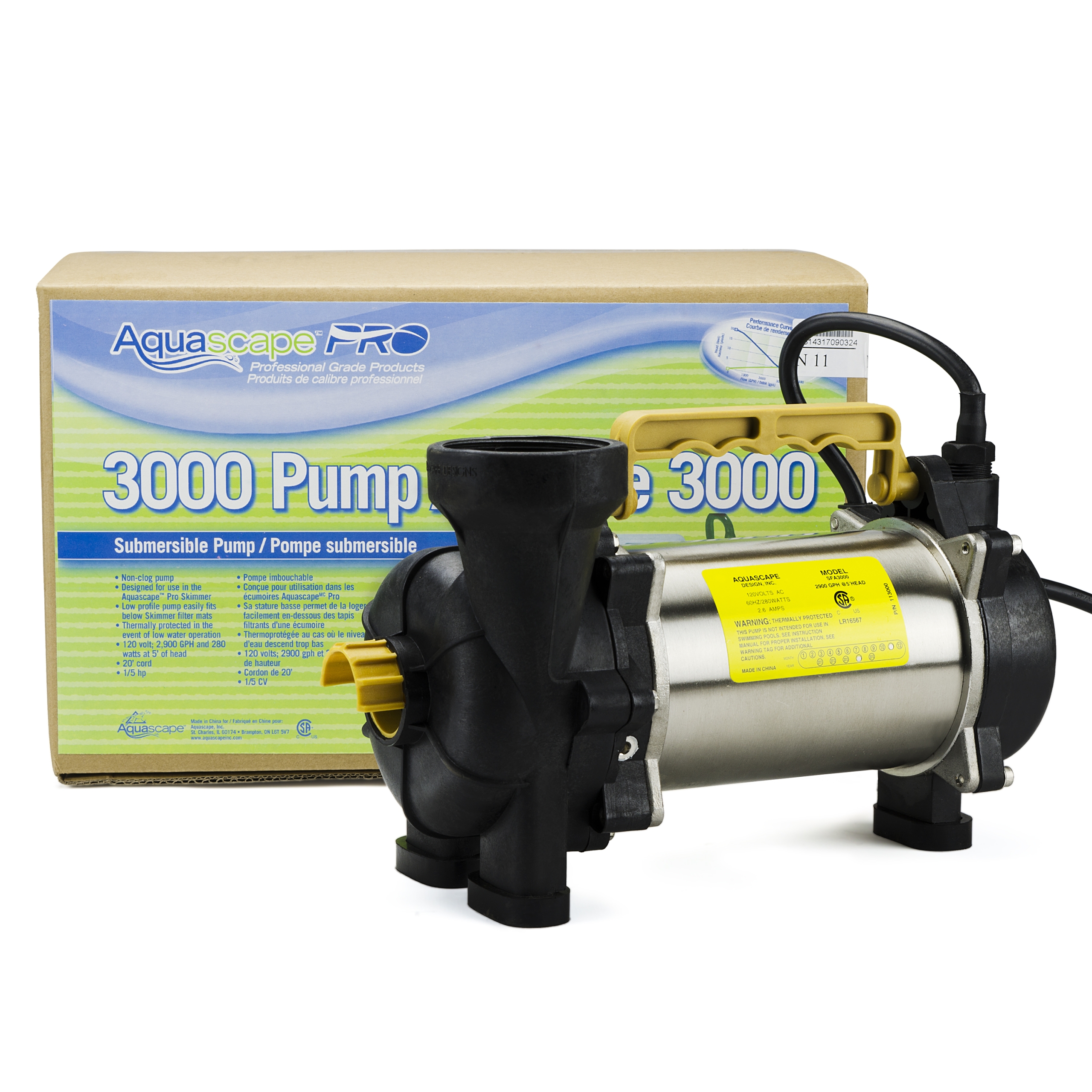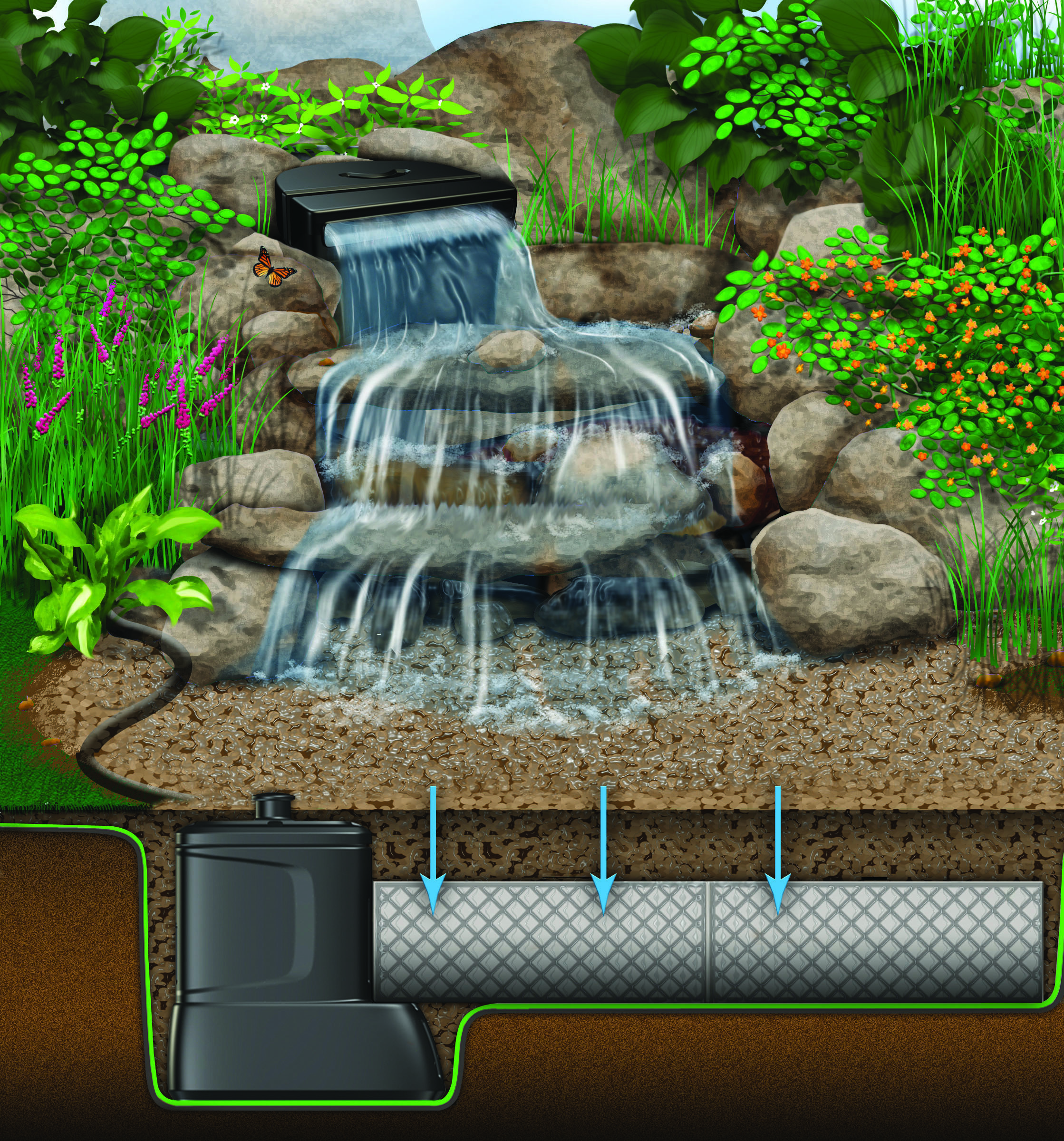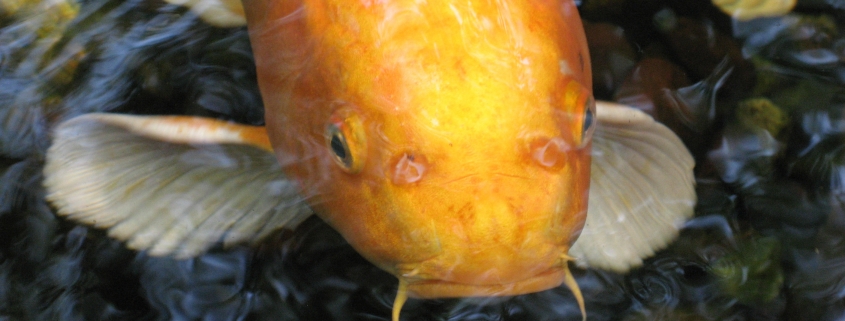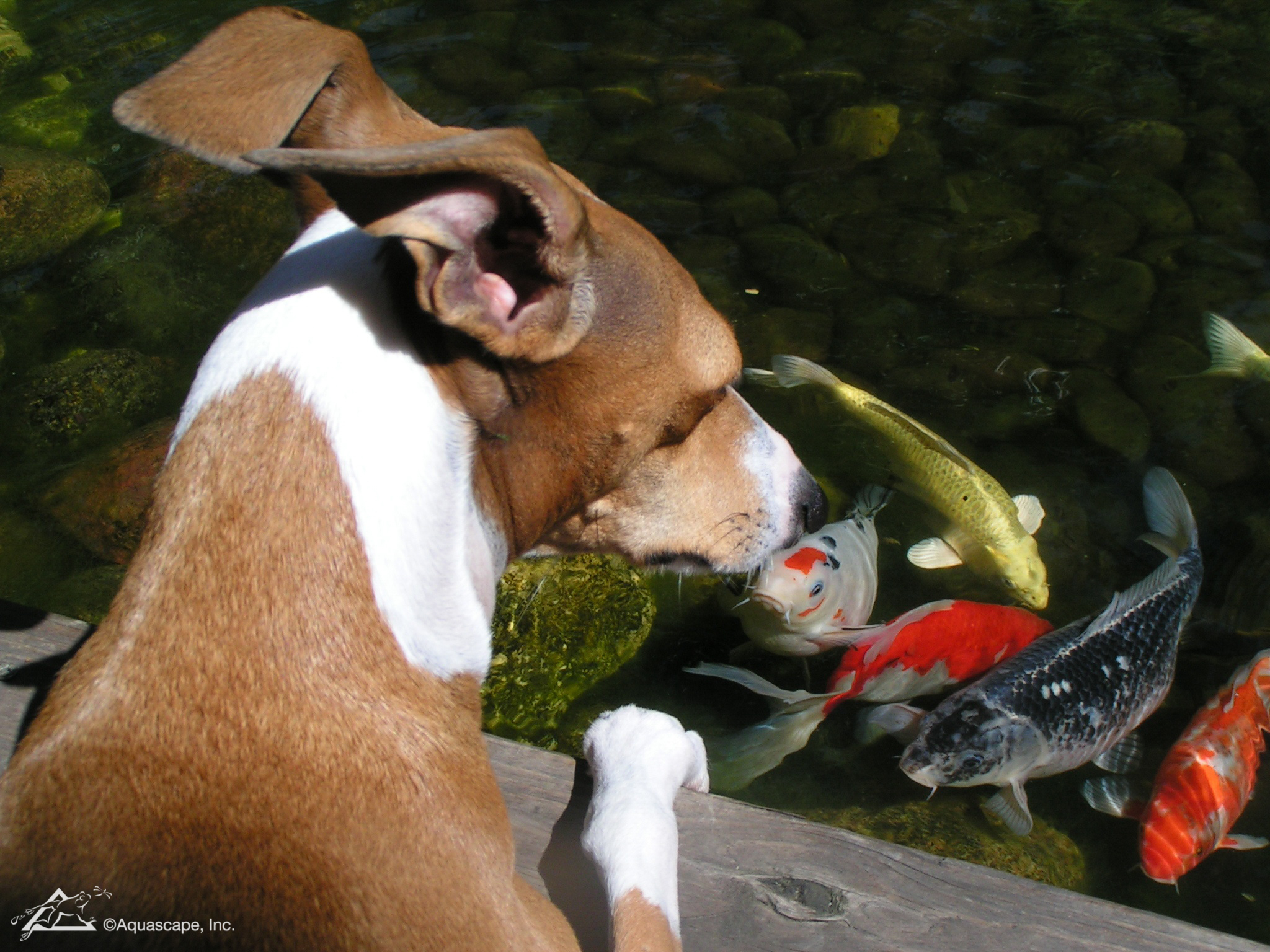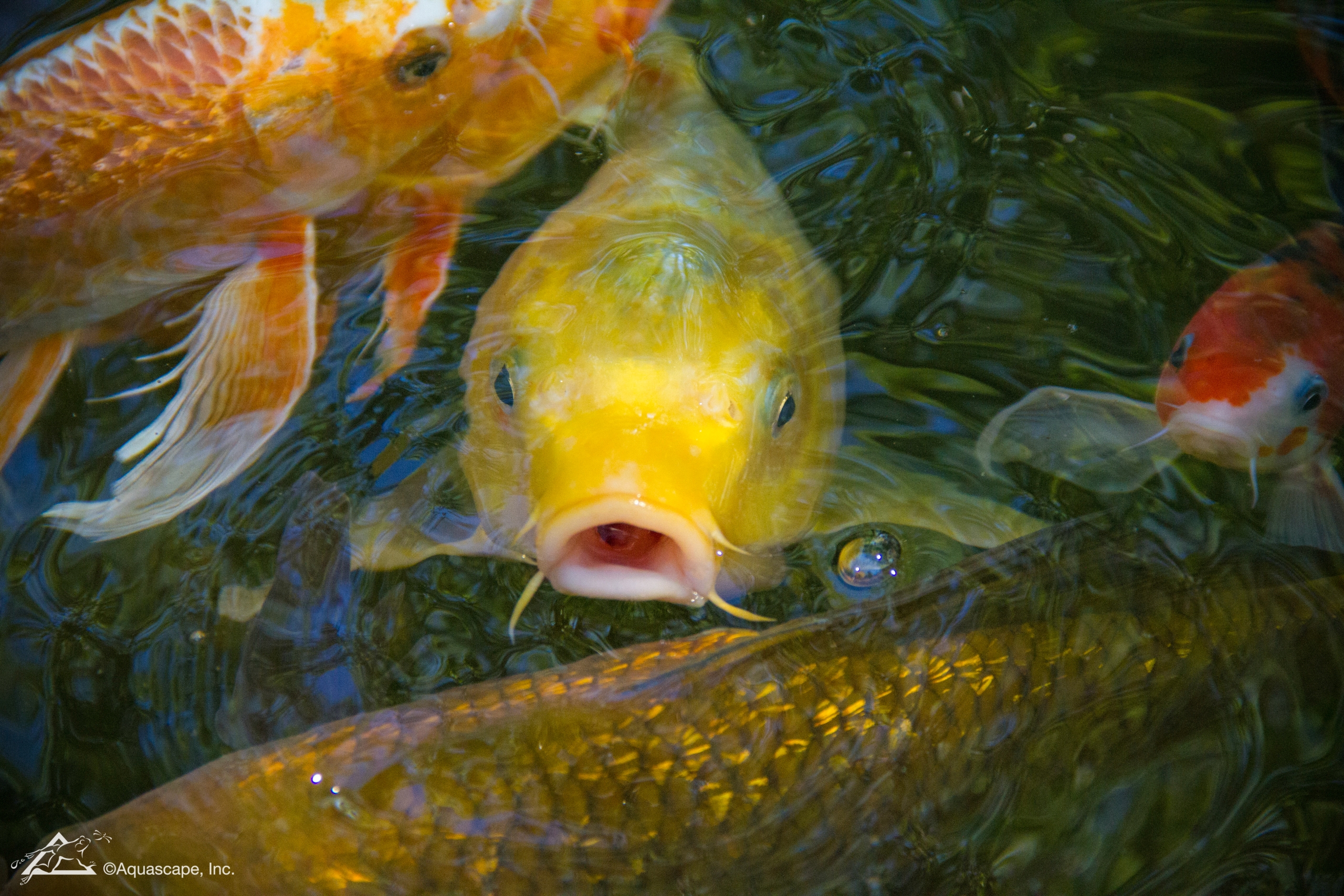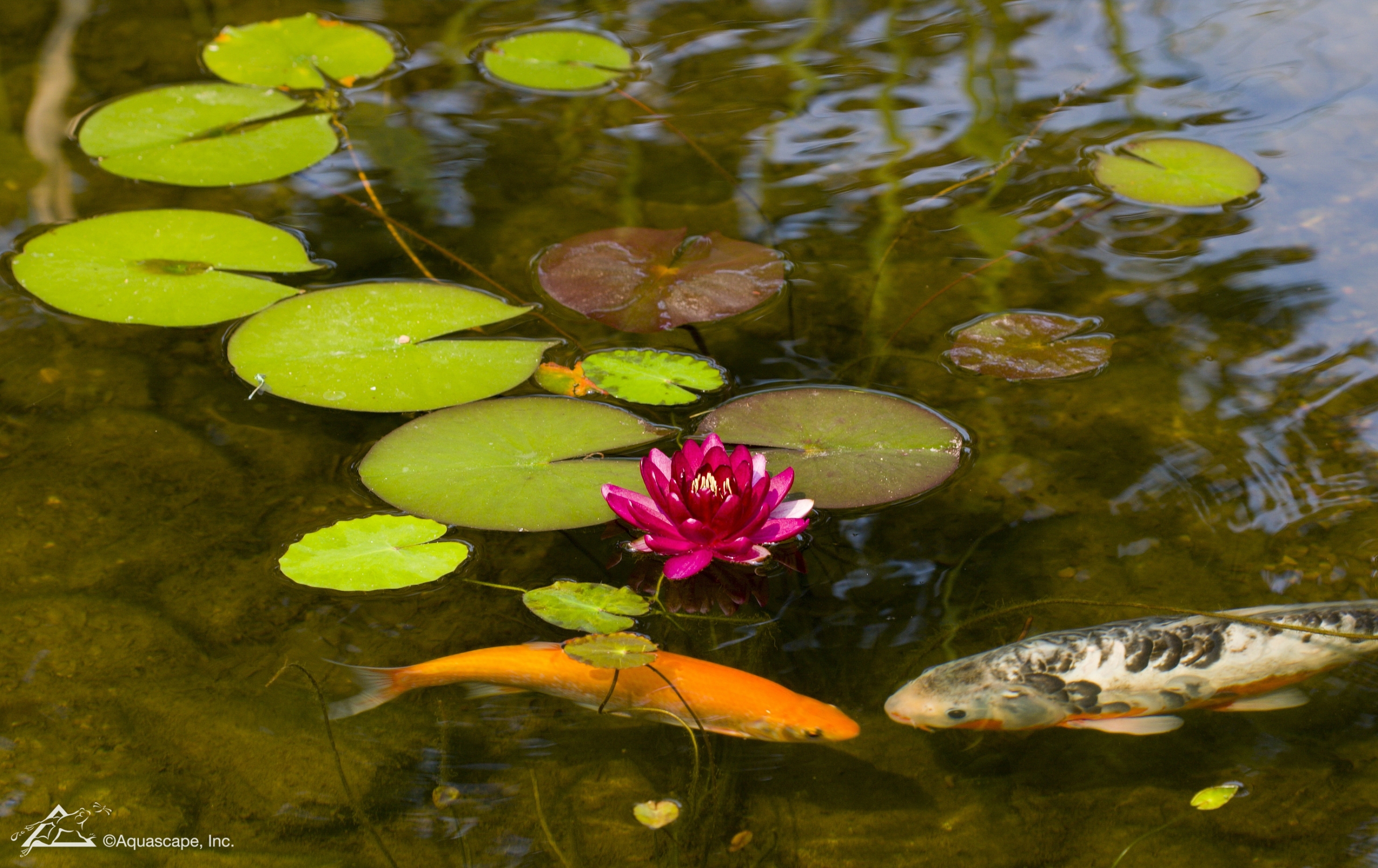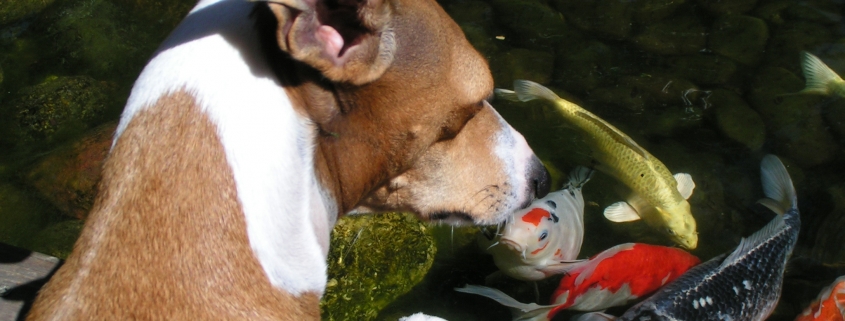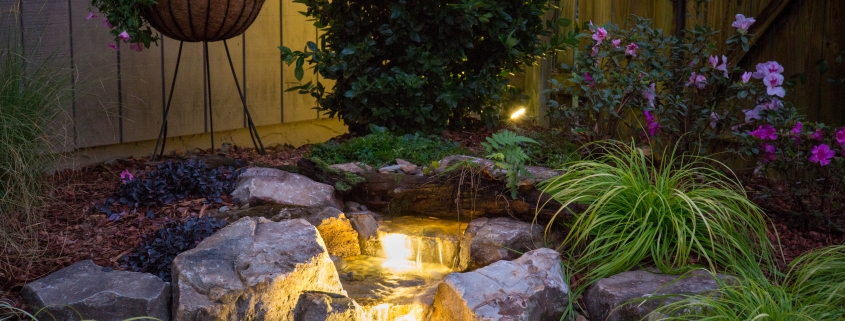Best Pond Pump Information 2021
Pumps keep the water in your pond healthy. They help evenly spread nutrients in the water to fish, plants and other aquatic life. Running water prevents stagnation and cuts down on algae and mosquitoes. Keeping the water moving ensures that oxygen levels are distributed throughout the pond. Pumps also provide power for a pond’s water features, like waterfalls and fountains.
This guide will help you learn about the best pond pumps for your garden.
~
The best water pumps for your pond and its fountain or waterfall come in variety of types and styles. They include submersible, external, magnetic drive and direct drive. Each of these water garden pumps offers its own advantages.
Submersible Pumps: These pumps are designed to work while wholly submerged in water. Typically, they are installed in the deepest part of the pond. Submersible pumps can be placed either directly into your pond or in a skimmer box or pond vault.
- Easy to install.
- Work well in environments that capitalize on a natural setting.
- No need to camouflage the pump.
- Run very quietly so there’s no distracting noise in your garden.
- Submersible pumps can be used to drain your pond, if needed.
- Range in pumping size from 50 to 5,000 gallons per hour.
- Can generate higher energy costs than other pump types.
- For smaller ponds, submersible pumps are generally more economical.
Tip: Some submersible pumps use oil to operate. If the pump seal breaks and leaks harmful oil coolant into the water, fish can be hurt or killed. If you have fish or other aquatic life in your pond, you’ll want to look for a submersible model that does not use oil.
External Pumps: External pumps can move a high volume of water, yet usually have lower energy costs than submersible pumps. They are not as quiet as submersible pumps. They should be placed in a dry location near your pond. External pumps are a lot more complicated to install. However, they are generally more reliable.
- Available as self-priming pumps able to draw their own water.
- Can be loud, disturbing the quiet of your garden.
- Work well for larger ponds that are 1,000 gallons or more.
- Offer long-lasting performance and easy repair.
- Require less routine maintenance than submersible pumps.
Tip: Pumps that are not self-priming can burn out a motor if the power shuts off momentarily and then comes back on. Protect against this by installing a check valve.
Magnetic Drive: In a magnetic-drive pump, an electrical charge creates a magnetic field that causes the magnet on the impeller to rotate and pump water. Since they have no seals to wear out, they require little maintenance. Occasionally, you will need to clean the impeller and its chamber for the most efficient operation.
- Completely sealed. Magnetic-drive pumps do not require lubrication.
- Because they don’t contain oil, magnetic-drive pumps are safer for ponds with fish, since oil leaks don’t occur.
- Don’t generate high head heights. Magnetic-drive pumps are unable to lift pond water vertically, which you might need to supply water to a fountain. They are not the best water pumps for fountains.
- Work best in cleaner environments with little or no debris.
- Highly efficient and cost-effective.
Direct Drive: Direct-drive pumps have an enclosed motor that is powered by electricity, which turns the impeller shaft.
- Achieve significant head height, so they are able to move water vertically. They are among the best water pumps for fountains and waterfalls.
- Typically more expensive to operate.
- Push water rather than pulling it.
- Not easily repaired.
Tip: Some models seal the motor in an oil-filled shell with seals around the cord and impeller shaft. These are risky to use if you have a pond stocked with fish. There is an ever-present danger of water contamination if a leak occurs. Many newer pumps, however, feature alternative lubrication that is safe for fish. Look for oil-free models if you have fish or other aquatic life in your pond.
Pond Pump Calculations
Pond Pump Features
Types of Koi
Types of Koi
Koi fish can reach up t three feet in length which makes them one of the largest fish that people commonly keep in their garden ponds.
Usually they have two barbells on either side of their jaw and have a round snout that they use for taking in prey.
The female Koi are larger and have a rounder body shape than males. Their fins are short and rounded with lobed fins. Certain varieties can be bred to have long trailing fins.
Koi are available in a variety of colors. Most white or silver with colorful markings and spots.
These markings can be red, gold, black, deep blue or even orange. Their exact color and marks depend on the type of Koi.
Butterfly Koi
Butterfly Koi can also be known as Drago Koi. They have long pectoral and caudial fins. Keepers of Koi seek them out as they are highly prized and valuable.
These Koi can have the same color markings are other Koi and can only be set apart by the length of their fins.
Japanese Koi
These are the most common Koi and recognizable as the variety that you will see in most garden ponds and water gardens.
They are two varieties of Japanese Koi. The Kohaku are white with orange and red markings and are more standard. The second type is the Tancho and look the same as Kohaku with the exception of a single red dot on the top of their head.
Dragon Fish Koi
Not to be confused with the Butterfly Koi variety, the Dragon Koi Fish or Kumonryu is a black and white fish with markings that may change during different seasons.
Black and White Koi
There are two varieties of this breed. The Shor Utsui that have white with black spots and markings. You may see black on one side of the head and white on the other in some of this type.
The other is the Matsuba which is black and white too but it may have black markings over a gold or red body.
Gold Koi
This type of Koi is also called an Ogon and is a prized one color. It will be entirely silver, gold or orange. Koi that have gold marks over a white body are called Ki. Kinrin fish sparkle in the water like gold coins due to their beautiful scales.
Next time we will talk about Koi habitats and the condition of their Ponds. If you would like to know more, ask one of our experts.
How can we help?
Introduction to Koi
Introduction to Koi
Let’s talk about Koi. What are they? In simple terms, Koi are fish. Specifically, they are an ornamental variation of a carp that are in the family Cyprinidae. In fact, the word Koi is the word for carp in Japanese.
Koi become popular in the 19th century when farmers in Japan started to use them in their rice gardens. They are now more common place in the world and have become a lucrative industry if you have the inclination to breed and grow them. That is not necessary to enjoy the simplicity of these wonderful fish as they are quite relaxing and mesmerizing to keep as pets.
Commonly in the wild, carp only live for twenty years but captive carp or Koi can be kept in a confined setting like a garden pond for up to fifty years with proper care and maintenance. Like any animal, they are a long-term commitment and certainly will last longer than most other pets.
Where can you get Koi fish? Common carp varieties can be found in many garden ponds and they can be purchased from reputable pond and aquarium dealers. The cost for each one ranges in price from fifty to eighty dollars.
What are Koi like? These lovely fish are very peaceful and will interact with others in their school and prefer to leave other species of fish alone. Typically, a school of fish will have between five and fifteen individual fish. When in a school, they will swim in a coordinated fashion that is beautiful. These are active fish and prefer to free-swim and show off their vibrant colors.
When you first purchase Koi, they will explore every part of their new environment. Expect to see them swim along the top or middle and look for natural food along the bottom of the pond.
Koi forage for food by taking a large inhale of food and then will filter out any debris that got into their mouth. For this reason, they are not recommended for freshwater ecosystems as they can disturb the natural setting of an aquarium. Koi will burrow and dig into sediment and uproot plants to eat on the seeds.
Will I have enough room for Koi? Koi fish are schooling fish and as such, you will want to have a few of them so they don’t get lonely. They can grow up to three feet in length. This is an important fact when calculating how big to make your garden pond if you eventually want to have Koi in your pond. The general rule of thumb is to have ten gallons of water for every inch of fish. This means you will want to have around 250 gallons of water for a single Koi fish at minimum.
If you are considering setting up a Koi pond, our professionals can help you with planning and design. Next time we will discuss the multiple varieties of Koi and setup for their pond.

